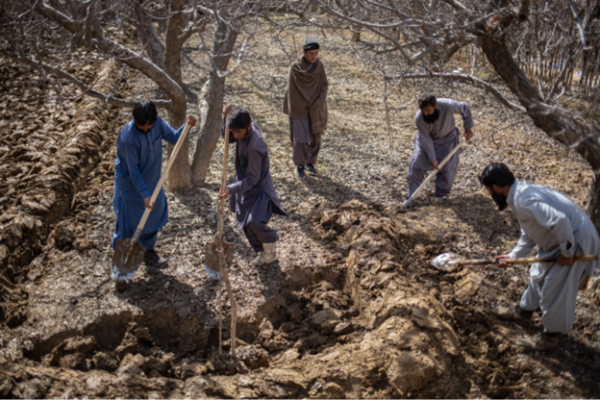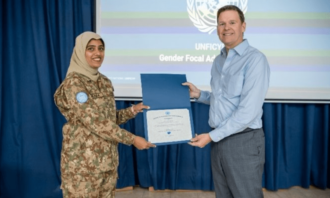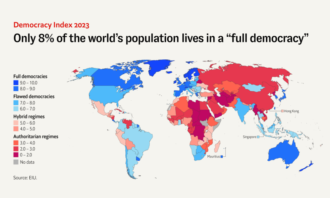
Try Adsterra Earnings, it’s 100% Authentic to make money more and more.

In March-April, the Pakistan government set up distribution sites across the country to provide sasta aur muft aata (low-cost and free flour) to people to ease their burden amid spiraling prices and the ongoing economic crisis in the country. But instead of doing good, the initiative caused trouble in several places where stampedes broke out, killing and injuring people.
Pakistanis are putting their lives at risk to collect something as basic as a sack of flour. It illustrates how the rising cost of food and other necessities is driving desperation and impacting the masses.
With inflation running at over 30 percent – a 50-year high – putting food on the table for the poorest, who comprise one-third of Pakistan’s population, has become harder than ever before.
When the recent stampedes over food flooded social media, so did the deeper questions: How did the country end up here? What does this economic crisis mean for the majority of the Pakistani people and for Pakistan’s international projects, especially those with China under the China-Pakistan Economic Corridor (CPEC), which Pakistan considers vital for its future economic growth?
Pakistan’s current GDP, per capita income, and GDP growth are the lowest in its neighborhood; only war-torn Afghanistan’s economy is weaker. Likewise, its unemployment and inflation rates are one of the highest in the region. The Human Development Index, which measures a country’s achievements through three basic dimensions – health, knowledge, and standards of living – placed Pakistan in the 161st position out of 185 countries in 2022. In other words, Pakistan is among the 25 countries with the lowest human development in the world.
The country’s current situation has multiple causes, including overall poor economic management, corruption, and excessive spending on defense and the armed forces. In a country where half the population is under the age of 22, investing in the education and technical skills of youth can generate opportunities for a more sustainable economy.
Many also associate the current economic crisis, especially the rise in food staples, with last year’s floods, which caused extensive damage to agricultural land, livestock, thousands of kilometers of road, and other infrastructure. This is partially right, as inflation touched a record high after the floods in August last year. But the war in Ukraine also halted grain supply to a number of countries, including Pakistan, resulting in a sharp increase in prices of foodgrains.
But the situation was not stable even prior to these crises. According to a World Bank report on inflation and development in Pakistan, food-related shortages and transportation challenges caused by the floods and the war in Ukraine that impacted essential grain imports significantly contributed to the inflation, but so did a hike in fuel and oil subsidies. Pakistan heavily relies on imported oil. A constant decline in the value of the country’s currency has resulted in much higher tariffs with every import of oil.
The unceasing decline in the value of Pakistan’s currency over the months has been triggered by the country’s inability to repay its foreign debt. Pakistan is essentially running on foreign loans, an economic model that only leads to borrowing more, which eventually results in bankruptcy. Between February 2023 and June 2026, Pakistan will have to repay around $80 billion in foreign debt.
As of December 2022, Pakistan held $126.3 billion in external debt and liabilities, of which 30 percent is owed to China. As much as the Chinese government has supported Pakistan’s infrastructure development through CPEC, which Pakistan is determined to benefit economically from in the future, for now, the federal government is having to repeatedly turn to the Chinese for refinancing and a rollover of debts.
Although the Chinese government and commercial banks have helped Pakistan by deferring debt repayment or rolling over debts in the past, it is hard to predict if China will continue to do so.
So far, of the numerous projects agreed upon under CPEC, only a few have been completed. Chinese frustration over endless delays in project completion, halting of projects, and security threats to its nationals working in Pakistan has resulted in hesitation to invest in new projects. Yet Pakistan remains one of the biggest beneficiaries of Chinese loans.
Many blame China for the high interest it charges on loans that have burdened many developing countries including Pakistan. Instead of the promised economic growth through CPEC, China’s loans may have worsened Pakistan’s economic crisis. But it is still too early to conclude whether CPEC debts will drain the Pakistani economy or open up opportunities for growth in the future.
For now, transparency over government spending is the need of the hour, along with restructuring the country’s economy from one that overspends on defense institutions and excessively relies on foreign debt with high interest to a model that is sustainable.
Published By








